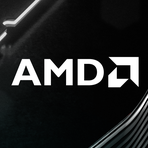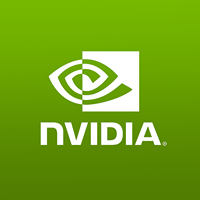The Rise and Fall of Tech Titans: Ayar Labs and Intel's Diverging Paths
December 12, 2024, 10:04 am
In the tech world, fortunes can shift like sand. One moment, a company is riding high, and the next, it’s grappling with uncertainty. This is the tale of two companies: Ayar Labs and Intel. One is basking in the glow of new funding, while the other is wrestling with its identity.
Ayar Labs, a San Jose-based innovator, recently secured $155 million in Series D funding. This influx of capital is a lifeline, pushing their total funding to $370 million and catapulting their valuation above $1 billion. The round was led by Advent Global Opportunities and Light Street Capital, with heavyweights like AMD Ventures, Intel Capital, and NVIDIA joining the fray. This diverse backing reflects a strong belief in Ayar Labs’ vision.
What’s their secret sauce? Optical interconnect solutions. In a world where AI workloads are exploding, Ayar Labs offers a way to optimize compute efficiency. Their technology reduces costs, latency, and power consumption. It’s like finding a shortcut in a maze—suddenly, the path becomes clearer and faster. The company aims to scale its optical I/O technology, creating a robust manufacturing ecosystem. This is not just about survival; it’s about thriving in a competitive landscape.
Meanwhile, Intel finds itself in a different narrative. Once a titan of innovation, the company is now facing a storm. Recent financial results have painted a bleak picture, culminating in the largest loss in its history. The departure of CEO Pat Gelsinger, a forced retirement, signals deeper issues. Intel is struggling to keep pace with rivals like NVIDIA and TSMC. It’s as if a once-mighty ship is now adrift at sea, battling waves of poor strategic decisions.
The question looms: Is Intel becoming the new Nokia? The comparison is stark. Nokia was once synonymous with mobile phones, only to falter in the face of innovation. Intel, once the heart of Silicon Valley, now grapples with its relevance. The digital landscape is unforgiving. Companies that fail to adapt can quickly find themselves in the rearview mirror.
Ayar Labs is on the ascent, leveraging cutting-edge technology to carve out a niche in the AI space. Their optical I/O solutions are not just a product; they represent a paradigm shift. As AI applications grow, the demand for efficient infrastructure becomes paramount. Ayar Labs is positioned to meet this need, offering a solution that enhances profitability metrics for AI applications. They are the agile gazelle, darting ahead while others stumble.
In contrast, Intel’s challenges are mounting. The company’s inability to innovate at the pace of its competitors has left it vulnerable. Decisions that once propelled it to the forefront now seem like anchors dragging it down. The semiconductor industry is evolving rapidly, and Intel’s missteps have cost it dearly. It’s a cautionary tale of complacency in a fast-moving world.
The tech landscape is littered with stories of rise and fall. Companies that once dominated can quickly fade into obscurity. Ayar Labs stands as a beacon of hope, a testament to the power of innovation and strategic investment. Their journey is just beginning, and the road ahead is filled with potential.
Intel, on the other hand, must confront its demons. The path to redemption is steep. It requires a radical shift in strategy, a return to the core principles that once fueled its success. The company needs to rediscover its innovative spirit, to become a phoenix rising from the ashes.
Investors are watching closely. The tech sector thrives on momentum. Ayar Labs is riding a wave of enthusiasm, while Intel is mired in uncertainty. The stakes are high. For Ayar Labs, the future looks bright. For Intel, the road ahead is fraught with challenges.
In conclusion, the tech industry is a tale of two narratives. Ayar Labs is a rising star, fueled by innovation and investment. Intel, once a giant, now faces an existential crisis. The contrast is stark, a reminder that in the world of technology, fortunes can change in the blink of an eye. As we look to the future, one thing is clear: adaptability is key. The companies that thrive will be those that embrace change and innovate relentlessly. The game is on, and the players are shifting.
Ayar Labs, a San Jose-based innovator, recently secured $155 million in Series D funding. This influx of capital is a lifeline, pushing their total funding to $370 million and catapulting their valuation above $1 billion. The round was led by Advent Global Opportunities and Light Street Capital, with heavyweights like AMD Ventures, Intel Capital, and NVIDIA joining the fray. This diverse backing reflects a strong belief in Ayar Labs’ vision.
What’s their secret sauce? Optical interconnect solutions. In a world where AI workloads are exploding, Ayar Labs offers a way to optimize compute efficiency. Their technology reduces costs, latency, and power consumption. It’s like finding a shortcut in a maze—suddenly, the path becomes clearer and faster. The company aims to scale its optical I/O technology, creating a robust manufacturing ecosystem. This is not just about survival; it’s about thriving in a competitive landscape.
Meanwhile, Intel finds itself in a different narrative. Once a titan of innovation, the company is now facing a storm. Recent financial results have painted a bleak picture, culminating in the largest loss in its history. The departure of CEO Pat Gelsinger, a forced retirement, signals deeper issues. Intel is struggling to keep pace with rivals like NVIDIA and TSMC. It’s as if a once-mighty ship is now adrift at sea, battling waves of poor strategic decisions.
The question looms: Is Intel becoming the new Nokia? The comparison is stark. Nokia was once synonymous with mobile phones, only to falter in the face of innovation. Intel, once the heart of Silicon Valley, now grapples with its relevance. The digital landscape is unforgiving. Companies that fail to adapt can quickly find themselves in the rearview mirror.
Ayar Labs is on the ascent, leveraging cutting-edge technology to carve out a niche in the AI space. Their optical I/O solutions are not just a product; they represent a paradigm shift. As AI applications grow, the demand for efficient infrastructure becomes paramount. Ayar Labs is positioned to meet this need, offering a solution that enhances profitability metrics for AI applications. They are the agile gazelle, darting ahead while others stumble.
In contrast, Intel’s challenges are mounting. The company’s inability to innovate at the pace of its competitors has left it vulnerable. Decisions that once propelled it to the forefront now seem like anchors dragging it down. The semiconductor industry is evolving rapidly, and Intel’s missteps have cost it dearly. It’s a cautionary tale of complacency in a fast-moving world.
The tech landscape is littered with stories of rise and fall. Companies that once dominated can quickly fade into obscurity. Ayar Labs stands as a beacon of hope, a testament to the power of innovation and strategic investment. Their journey is just beginning, and the road ahead is filled with potential.
Intel, on the other hand, must confront its demons. The path to redemption is steep. It requires a radical shift in strategy, a return to the core principles that once fueled its success. The company needs to rediscover its innovative spirit, to become a phoenix rising from the ashes.
Investors are watching closely. The tech sector thrives on momentum. Ayar Labs is riding a wave of enthusiasm, while Intel is mired in uncertainty. The stakes are high. For Ayar Labs, the future looks bright. For Intel, the road ahead is fraught with challenges.
In conclusion, the tech industry is a tale of two narratives. Ayar Labs is a rising star, fueled by innovation and investment. Intel, once a giant, now faces an existential crisis. The contrast is stark, a reminder that in the world of technology, fortunes can change in the blink of an eye. As we look to the future, one thing is clear: adaptability is key. The companies that thrive will be those that embrace change and innovate relentlessly. The game is on, and the players are shifting.

